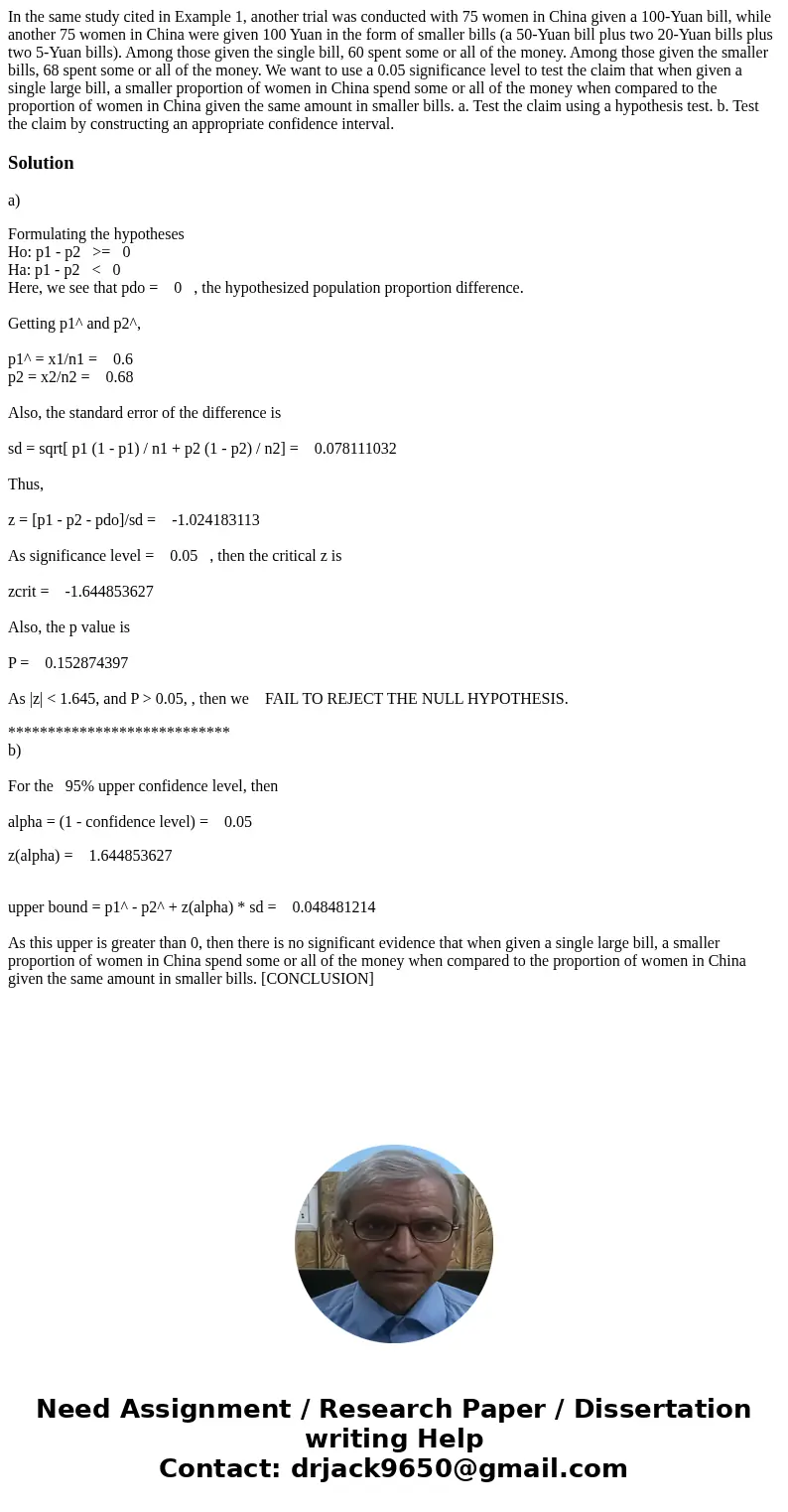In the same study cited in Example 1 another trial was condu
In the same study cited in Example 1, another trial was conducted with 75 women in China given a 100-Yuan bill, while another 75 women in China were given 100 Yuan in the form of smaller bills (a 50-Yuan bill plus two 20-Yuan bills plus two 5-Yuan bills). Among those given the single bill, 60 spent some or all of the money. Among those given the smaller bills, 68 spent some or all of the money. We want to use a 0.05 significance level to test the claim that when given a single large bill, a smaller proportion of women in China spend some or all of the money when compared to the proportion of women in China given the same amount in smaller bills. a. Test the claim using a hypothesis test. b. Test the claim by constructing an appropriate confidence interval.
Solution
a)
Formulating the hypotheses
Ho: p1 - p2 >= 0
Ha: p1 - p2 < 0
Here, we see that pdo = 0 , the hypothesized population proportion difference.
Getting p1^ and p2^,
p1^ = x1/n1 = 0.6
p2 = x2/n2 = 0.68
Also, the standard error of the difference is
sd = sqrt[ p1 (1 - p1) / n1 + p2 (1 - p2) / n2] = 0.078111032
Thus,
z = [p1 - p2 - pdo]/sd = -1.024183113
As significance level = 0.05 , then the critical z is
zcrit = -1.644853627
Also, the p value is
P = 0.152874397
As |z| < 1.645, and P > 0.05, , then we FAIL TO REJECT THE NULL HYPOTHESIS.
****************************
b)
For the 95% upper confidence level, then
alpha = (1 - confidence level) = 0.05
z(alpha) = 1.644853627
upper bound = p1^ - p2^ + z(alpha) * sd = 0.048481214
As this upper is greater than 0, then there is no significant evidence that when given a single large bill, a smaller proportion of women in China spend some or all of the money when compared to the proportion of women in China given the same amount in smaller bills. [CONCLUSION]

 Homework Sourse
Homework Sourse